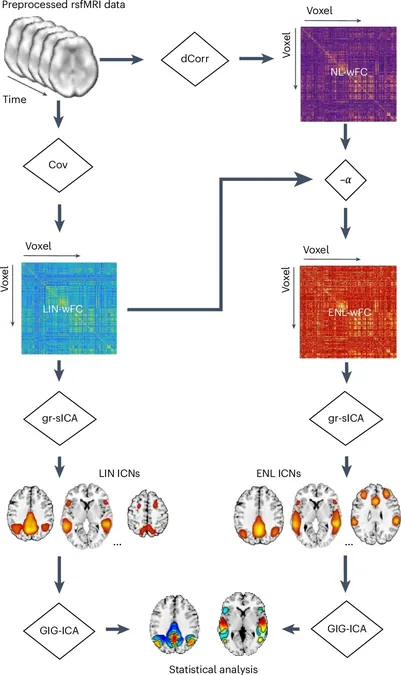
The Resurrection of Blue Skies: China's Battle Against Air Pollution
2024-11-20
Author: Nur
**BEIJING:** After years of battling what some dubbed an 'airpocalypse,' China's big cities are witnessing a remarkable transformation as blue skies return to urban landscapes. Recent statistics from the country's environmental ministry highlight a significant achievement: levels of PM2.5—fine particulate matter linked to serious health risks—have plummeted by a staggering 54% from 2013 to 2023.
According to official reports, major cities in China are experiencing good air quality roughly 80% of the time. In an impressive performance, Beijing recorded an astonishing 90% of good air days last year, with only 2% classified as bad, predominantly due to seasonal sandstorms.
Dr. Christa Hasenkopf, director of the Clean Air Program at the University of Chicago’s Energy Policy Institute, emphasizes the importance of this shift. “China has set an unprecedented example of how rapidly a nation can combat air pollution when there is alignment of political will, societal motivation, and resources,” she stated. “Not only has cleaner air been achieved, but this has occurred alongside economic growth.”
A Bold Initiative to Combat Pollution
This journey toward cleaner air began in 2013 when China declared an all-out war on air pollution through its comprehensive action plan, which has since emerged as the country's most impactful environmental policy. The government implemented extensive strategies, including relocating heavy industries away from major urban centers, transitioning households and buildings to cleaner heating solutions, and electrifying public transportation. Notably, Shenzhen became the world’s first city to convert its entire fleet of approximately 17,000 public buses to electric in 2017, setting a global benchmark.
Significant investment plays a crucial role in this fight; the Chinese government allocates around US$4.2 billion annually for air pollution control measures, as reported by Xinhua.
Not Out of the Woods Yet
Despite these achievements, the specter of pollution still looms large, with air quality in China remaining a pressing issue. Dr. Hasenkopf cautions against complacency, stating, "There's reason to be impatient for cleaner air in China." Alarmingly, 99.9% of China's 1.4 billion residents continue to reside in areas where the average air pollution levels exceed the World Health Organization (WHO) guidelines.
Particularly during winter, when coal burning spikes for heating and power generation, pollution levels can soar. In March 2023, Beijing faced thick smog just as the politically significant “Two Sessions” parliamentary meetings were taking place, marking a rare resurgence of PM2.5 levels after a decade of decline.
The Human Cost of Air Pollution
The health implications of ongoing air pollution are severe. According to a troubling study by Singapore’s Nanyang Technological University, PM2.5 exposure contributed to the premature deaths of 49 million people in China from 1980 to 2020. Dr. Hasenkopf's research indicates that individuals in Beijing's heavily polluted regions may lose as much as 3.2 years of life expectancy due to air quality issues, affecting vulnerable groups such as children more acutely.
Ambitious Future Goals
In December 2022, China introduced a new air quality action plan aimed at reducing PM2.5 levels by 10% by 2024 compared to 2020 levels. The objectives include decreasing the proportion of heavily polluted days to 1% or less and cutting emissions of nitrogen oxides and volatile organic compounds by 10%. The nation is also ambitiously working towards achieving carbon neutrality by 2060, with aspirations for non-fossil energy sources to comprise at least 20% of total energy consumption by 2025.
Experts acknowledge that while progress has been admirable, the path ahead may be more challenging. “The low hanging fruit has already been picked,” notes Professor Huang Yanzhong, a senior fellow at the Council on Foreign Relations. “Improving air quality will require considerably more effort moving forward.”
As citizens adapt to their new normal of cleaner air, the awareness and necessity for sustained efforts remain paramount in the quest for a healthier environment in China.




 Brasil (PT)
Brasil (PT)
 Canada (EN)
Canada (EN)
 Chile (ES)
Chile (ES)
 España (ES)
España (ES)
 France (FR)
France (FR)
 Hong Kong (EN)
Hong Kong (EN)
 Italia (IT)
Italia (IT)
 日本 (JA)
日本 (JA)
 Magyarország (HU)
Magyarország (HU)
 Norge (NO)
Norge (NO)
 Polska (PL)
Polska (PL)
 Schweiz (DE)
Schweiz (DE)
 Singapore (EN)
Singapore (EN)
 Sverige (SV)
Sverige (SV)
 Suomi (FI)
Suomi (FI)
 Türkiye (TR)
Türkiye (TR)